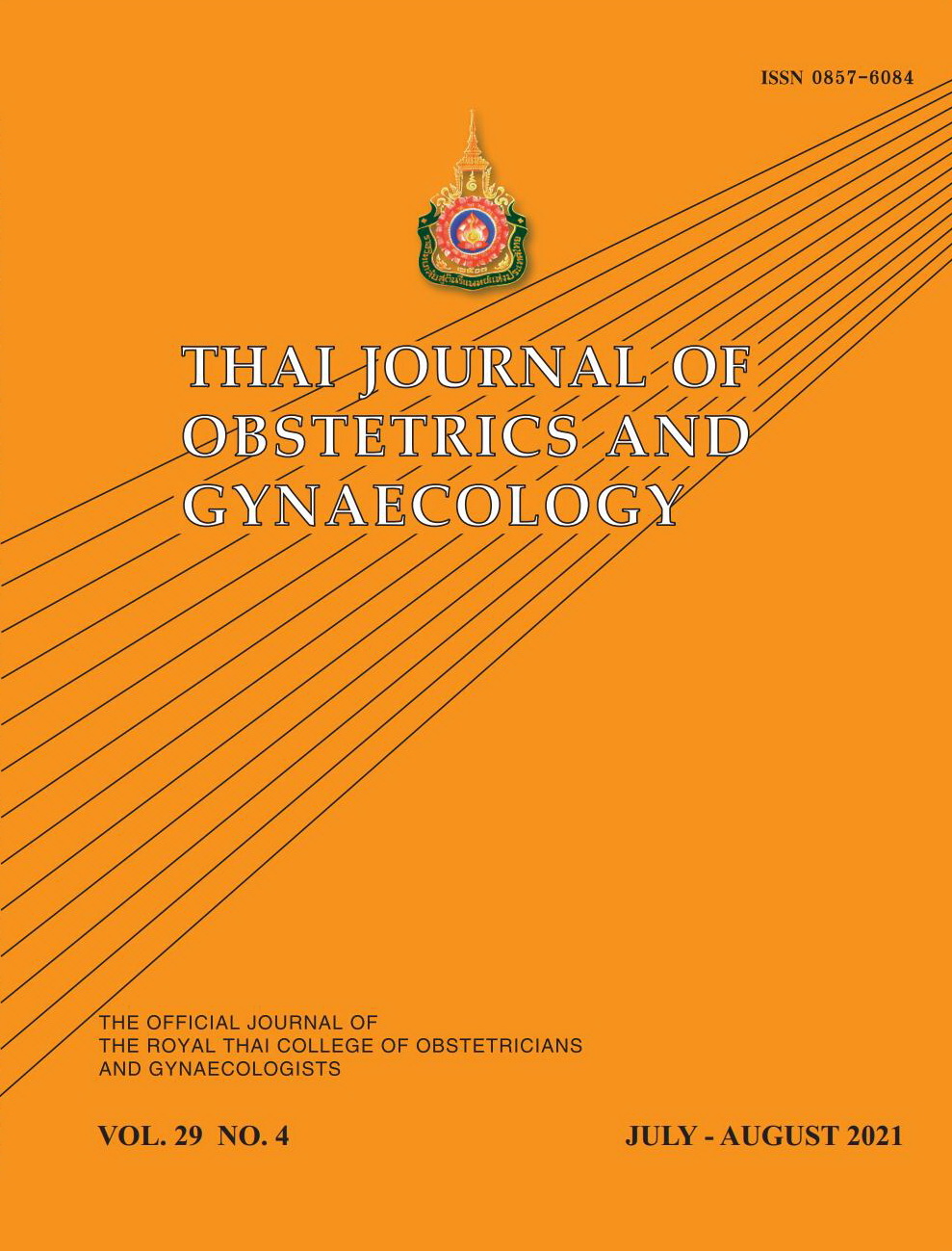Discontinuation of Contraceptive Implants within 12 Months of Use
Main Article Content
Abstract
Objectives: To assess discontinuation of the contraceptive implants within 12 months of implementation and associated factors.
Materials and Methods: A retrospective chart review was conducted of women who received contraceptive implants between June 2012 and June 2017. Baseline characteristics and postplacement side effects associated with implant discontinuation were assessed using t tests, χ2/Fisher’s exact tests, and backwards stepwise logistic regression.
Results: Of 259 women, 23 (8.9%, 95% confidence interval (CI) 5.4% -12.4%) requested their devices be removed prior to 12 months of use. We found similar discontinuation rates between participants with etonogestrel implants (9/103, 8.7%) and those with levonorgestrel implants (14/156, 8.9%). The most frequently cited reasons for removal were bleeding problems (17.4%) and wanting to become pregnant (13%). The majority of women chose either no contraception or less effective methods after removal of the implant. Those women who had underlying diseases, fatigue, or other side effects during the postpartum period were more likely to remove the contraceptive implant by 12 months, independent of other factors.
Conclusion: Both types of contraceptive implant had excellent continuation rates. Side effects (including, but not limited to, bleeding pattern changes) were the main reason for discontinuation. Physician should emphasize the importance of switching contraceptive methods for those who discontinue the contraceptive implant but still require contraception.
Article Details
References
Stoddard A, McNicholas C, Peipert JF. Efficacy and safety of long-acting reversible contraception. Drugs 2011;71:969-80.
Mäkäräinen L, van Beek A, Tuomivaara L, Asplund B, Coelingh Bennink H. Ovarian function during the use of a single contraceptive implant: Implanon compared with Norplant. Fertil Steril 1998;69:714-21.
Committee on Practice Bulletins-Gynecology, Long-Acting Reversible Contraception Work Group. Practice Bulletin No. 186: Long-acting reversible contraception: implants and intrauterine Devices. Obstet Gynecol 2017;130:e251-69.
Ali M, Akin A, Bahamondes L, Brache V, Habib N, Landoulsi S, et al. Extended use up to 5 years of the etonogestrel-releasing subdermal contraceptive implant: comparison to levonorgestrel-releasing subdermal implant. Hum Reprod 2016;31:2491-8.
ACOG Committee Opinion No. 735: Adolescents and long-acting reversible contraception: implants and intrauterine devices. Obstet Gynecol 2018;131:e130-9.
Chaovisitsaree S, Piyamongkol W, Pongsatha S, Morakote N, Noium S, Soonthornlimsiri N. One year study of Implanon on the adverse events and discontinuation. J Med Assoc Thai 2005;88:314-7.
G/Medhin T, Gebrekidan KG, Nerea MK, Gerezgiher H, Haftu M. Early Implanon discontinuation rate and its associated factors in health institutions of Mekelle City, Tigray, Ethiopia 2016/17. BMC Res Notes 2019;12:8.
Melkamu Asaye M, Syoum Nigussie T, Mequannt Ambaw W. Early Implanon discontinuation and associated factors among Implanon user women in Debre Tabor Town, Public Health Facilities, Northwest Ethiopia, 2016. Int J Reprod Med 2018;2018:3597487.
Harvey C, Seib C, Lucke J. Continuation rates and reasons for removal among Implanon users accessing two family planning clinics in Queensland, Australia. Contraception 2009;80:527-32.
Casey PM, Long ME, Marnach ML, Bury JE. Bleeding related to etonogestrel subdermal implant in a US population. Contraception 2011;83:426-30.
Jain AK, Winfrey W. Contribution of contraceptive discontinuation to unintended births in 36 developing countries. Stud Fam Plann 2017;48:269-78.
Darney P, Patel A, Rosen K, Shapiro LS, Kaunitz AM. Safety and efficacy of a single-rod etonogestrel implant (Implanon): results from 11 international clinical trials. Fertil Steril 2009;91:1646-53.
Mavranezouli I, LARC Guideline Development Group. The cost-effectiveness of long-acting reversible contraceptive methods in the UK: analysis based on a decision-analytic model developed for a National Institute for Health and Clinical Excellence (NICE) clinical practice guideline. Hum Reprod 2008;23:1338-45.
Grunloh DS, Casner T, Secura GM, Peipert JF, Madden T. Characteristics associated with discontinuation of long-acting reversible contraception within the first 6 months of use. Obstet Gynecol 2013;122:1214-21.
Berlan E, Mizraji K, Bonny AE. Twelve-month discontinuation of etonogestrel implant in an outpatient pediatric setting. Contraception 2016;94:81-6.
Diedrich J, Zhao Q, Madden T, Secura G, Peipert J. Three-year continuation of reversible contraception. Am J Obstet Gynecol 2015;213:662.e1-662.e8.
Nageso A, Gebretsadik A. Discontinuation rate of Implanon and its associated factors among women who ever used Implanon in Dale District, Southern Ethiopia. BMC Womens Health 2018;18:189.
Bahamondes L, Brache V, Meirik O, Ali M, Habib N, Landoulsi S, et al. A 3-year multicentre randomized controlled trial of etonogestrel- and levonorgestrel-releasing contraceptive implants, with non-randomized matched copper-intrauterine device controls. Hum Reprod 2015;30:2527-38.
Dickerson LM, Diaz VA, Jordon J, Davis E, Chirina S, Goddard JA, et al. Satisfaction, early removal, and side effects associated with long-acting reversible contraception. Fam Med 2013;45:701-7.
Lindley KJ, Madden T, Cahill AG, Ludbrook PA, Billadello JJ. Contraceptive use and unintended pregnancy in women with congenital heart disease. Obstet Gynecol 2015;126:363–9.
Gueye A, Speizer IS, Corroon M, Okigbo CC. Belief in family planning myths at the individual and community levels and modern contraceptive use in Urban Africa. Int Perspect Sex Reprod Health 2015;41:191-9.


